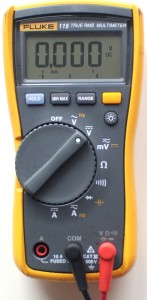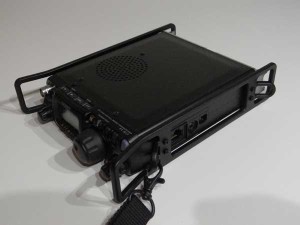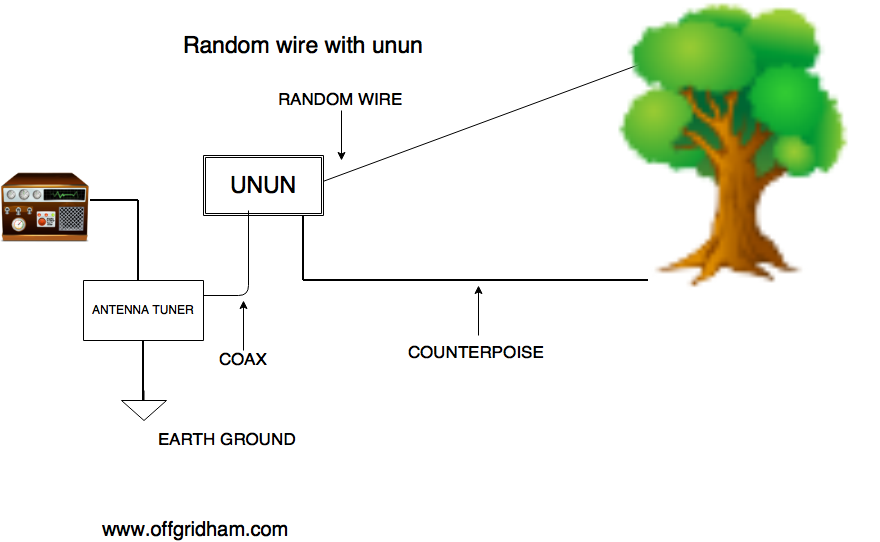Getting back to business.
Since the holidays are over and we are in that dull time between New Year and warm weather, it would be a good moment to take stock of where you are with your off grid goals and determine where improvements are needed. If you got money or gift cards for Christmas, then hopefully some of it will be delegated to radio equipment. To start off the new year, here is a partial list of some of my favorite off grid amateur radio related items that I personally own and use.
The Fluke 115 multimeter.
A multimeter is so fundamental that you can’t honestly say you’re a serious ham unless you own one. It is the one must-have instrument that can bail you out of so many problems. They’re like a Swiss Army knife, a spare tire, a life jacket, and duct tape all rolled into one.
I own numerous multimeters but the Fluke 115 is my favorite. With only one single dial for all functions, it’s about as simple as it gets. They cost around $150 which is more than some hams are comfortable spending, but it is an investment that will pay for itself over and over. If you have $350 or so to spend, go for the Fluke 87-V. I do not personally own an 87-V but I do use one issued to me by my employer for my “real job” and it is a superlative instrument worthy of its price tag. There are other good quality multimeters available for less, but the Fluke 115 offers excellent value for the money. You will not regret purchasing one.
This older Off Grid Ham article discusses multimeters in great detail: What the specs mean, what to look for, what to ignore, etc.
Yaesu FT-817.
The Yaesu FT-817ND has been replaced by the 818, but the two radios are nearly identical in appearance and function. The 817 has achieved legend status and is a favorite among many, with good reason. It shoves a lot of performance and features in a very small package and there are dozens if not hundreds of web forums, blogs, and social media pages dedicated solely to the 817/818 that offer users helpful hacks and support.
Some hams are turned off by the 817/818’s QRP power output levels, but those of us who have tried the radio and declared it a favorite know that with a little practice and patience the reduced transmit power is not a significant drawback. There are way more pros than cons with this radio. As we have discussed on this blog may times before, if you have any aspirations of operating ultra-portable, or are a survivalist/prepper looking for effective communications with minimal power requirements, suck it up and get used to QRP because there really aren’t any practical high transmit power options that are energy efficient, light, and portable.
Portable Zero “tactical carrier”.
Let’s get one thing out of the way: “Tactical” is a tiresome, worn out buzzword. Marketing spin doctors think if they attach the term to any product description or name it will suddenly become a must-have for survivalists/preppers, EMCOMM folks, and mall ninja Rambo wannabes
Tedious nomenclature notwithstanding, the Portable Zero tactical carrier has been on my favorite list for a long time. I have one on my FT-817 but there are versions for other radios too. It is basically an aluminum frame that encloses your radio and protects it from damage. It does look “tacticool” tough, but It’s not all about flash over function. The Portable Zero is effective, good looking, and weighs almost nothing.
This Off Grid Ham article from 2015 reviews the Portable Zero in greater detail. The awkward ordering & payment procedure mentioned in my original review has been corrected.
Renogy RNG-100P solar panel.
I bought the Renogy RNG-100P a few years ago because I wanted a mid-sized panel for my various experiments and tests.
I was pleasantly surprised at how well made the Renogy panel is. That, along with consistent power output, earned it a place on my favorite list. When it’s not being used for an experiment, it sits on my back deck supplementing my home solar power system. I paid $124.00 for my Renogy back in 2016 but as of this writing they are down to $109.99 on Amazon. It’s great value for the money and is perfect for small systems, kids science fair projects, Field Day, or if you just want a decent sized panel for tinkering.
The only caveat about the RNG-100P is that to use it you’ll need cabling with MC4 connectors. This adds to the cost, but if you plan on getting into solar beyond 25 watts or so, you’ll need to invest in MC4 connections anyway. Pre-made cables are available; I strongly suggest off grid hams learn how to make their own. MC4 is a standard in solar and there are more details about them in this 2016 Off Grid Ham article.
Renogy also makes solar charge controllers and related products. I don’t know how good they are, but if their solar panels are indicative of their entire catalog, then they have a lot of great stuff.
LDG automatic antenna tuner for QRP.
I don’t remember who tipped me off about the LDG antenna tuner, but I owe that individual a twelve pack of their favorite beverage. This little tuner opens a world of possibilities for QRP operators. I use mine for random wire antennas and have experienced great success with it.
If you have an FT-817/818, the LDG is especially attractive because it connects to the CAT port on the back of the radio (cable included) and becomes fully automatic. It’s slightly smaller than an 817/818 radio and weighs about 13 ounces including the batteries. Even ultra-portable backpack operators can’t justify leaving it behind! The main drawback is that the automatic function works only on Yaesu radios with an accessory or CAT port. It will work with other radios as a manual tuner, but that would not make much sense…you can buy a manual QRP tuner for a lot less than the $129.00 MSRP on this gizmo.
The LDG has simple one-button operation. If you have an FT-817/818, the LDG tuner is a very worthwhile accessory that will quickly become your favorite too. There isn’t much else to say…this thing really works!
The random wire antenna.
This simple and inexpensive antenna was described in detail in a December 2016 Off Grid Ham article and over two years later it is still the #1 most viewed article on this website. OGH readers agree: The random wire antenna is a timeless favorite.
Why it’s a favorite is obviously clear: It works very well, is inexpensive & easy to make from materials most of us already have, and is small and portable. The random long wire can be strung up on a tree or tent pole or whatever is around. It’s not picky about orientation. My current random wire is made with 16 gauge wire, which is really bigger than I need for running QRP. When the weather improves here in the upper Midwest USA I’m going to make a new version of this antenna with thinner 22 or even 24 gauge telephone MDF “frame wire”. That should cut the weight and space down quite a bit with no sacrifice in performance.
Including the cost of a basic manual antenna tuner, anyone should be able to throw together a random wire for less than a hundred bucks. In a world where big-dollar exotic looking antennas command a lot of attention, the 100-plus year old random wire still hold its own as a favorite.
This list could have been a lot longer.
After being into ham radio for several decades, I’m firmly established in my preferences. That doesn’t mean I’m not open to new things, it just means that I am not a blank sheet of paper that doesn’t know what he wants. I could have made my favorite list much longer. To keep it reasonable, I picked out the top few things that worked out really well for me and would have wide appeal to other operators. There are also things I don’t like, even hate. Maybe down the road I’ll do an article about them.
Do you have a favorite thing? Tell us about it in the comment section or send an email through the Off Grid Ham contact page. I’d love to hear what works well for others. If your story is compelling maybe I’ll do an article about it.
Resources.
LDG Electronics Z-817 product page



A multimeter is certainly an absolutely essential piece of equipment for any amateur radio operator, and you can’t go wrong with the Fluke 115. I’ve had one of those for, oh, five or six years now and it’s a great unit. Certainly far better than a lot of the junk I used to buy back in the day from Radio Shack. Although RS did sell some good ones if you knew what you were looking for.
I don’t know much about the Yaesu except that I want one . From everything I’ve heard they’re great QRP rigs. When I first got into amatuer radio I thought I’d need the most power I could legally use and could afford, but 99% of the contacts I make even at home are with 60 watts or less, often a lot less and I haven’t even turned on one of the big amplifiers in something like three years.
I have worked with LDG tuners in the past and they’re great. At home I use a Palstar tuner but for our ARES operations we used LDG tuners for our HF installations. They were easy to use and reliable.
It’s funny how a lot of people get silly about antennas. They are, or can be, pretty simple things. The random wire is a classic. It’s easy to make, easy to deploy and easy to use. And cheap. A bit of wire hung in a tree, a counterpoise, a tuner, and you’re ready to go. I’ve cobbled together antennas out of old extension cords, speaker wire, etc. just to show people they don’t need to spend hundreds of dollars on a commercially made one. They get hung up on height, too, thinking they need to loft the thing 50 feet into the air. While height can be helpful, it isn’t essential either. In the last year I’ve worked a large part of Europe, Alaska, Hawaii, Australia, Japan, and Tasmania with an off center fed dipole in a “V” configuration hanging about 8 feet in the air in the backyard,
Good morning, Randall. I’m always happy to hear your insights and observations. For Off Grid Ham readers who do not know, Randall is the proprietor of the Grouchy Farmer blog. It’s witty, interesting, and occasionally includes ham radio related content. There is a link to GF on the Off Grid Ham Links & Resources page.
About multimeters, it’s strange how so many amateurs put themselves through great expense and trouble to build a station decked out with high end equipment but when they need a multimeter to maintain it they head to Harbor Freight and get the $4.99 cheapie (as I write this they are giving them away for free). The 115 is not my only Fluke. I also have an older 77, a 77-III, and an “amp clamp”. In addition, I’ve got several meters from Radio Shack and other brands. In all, over the years I’ve acquired probably a dozen or so multimeters. They are all ok but I always find myself going back to one of the Flukes. I encourage radio amateurs to buy a good quality multimeter early in their ham career even if it means stretching the budget.
I’ve got nothing against commercially made antennas. In fact, I saw one at a recent swap meet that I really liked. It’s $400. I am getting a tax refund soon. Hmmmm. But seriously, there are plenty of less expensive home brew alternatives. There is no need to reinvent the wheel; the laws of physics have not changed since radio was discovered. With a little research and effort, anyone can very inexpensively make an effective and practical antenna.
I should have added that I do use commercially made antennas as well. I have a Comet multi-band vertical that I’ve had up for, oh, five years now. I have a GAP Titan sitting on blocks in the backyard mostly assembled that I’ve been telling myself I’m going to get up “real soon now” as soon as I can overcome my laziness, and I have a Buckmaster OCFD that works pretty well. I want people to have fun with amateur radio, and I don’t care if they buy their equipment, make it themselves or whatever. Just have fun with it 🙂
Speaking of Radio Shack – I really miss that place. That store saved me on more than one occasion when I was a service technician back in the late 90s. I serviced point of sale systems, cash registers, bar code scanners, scales, etc. mostly for grocery stores. I had a small van literally packed to the roof with spare parts, test equipment, backup equipment, etc. but I could count on running into a job that required something I didn’t have, whether it was a transistor or a resistor or whatever and Radio Shack had stores just about everywhere.
I’ll probably be playing amateur radio a lot over the next few days. We’re in the middle of a major snowstorm right now with up to 14 inches of snow and high winds, followed by a cold snap with windchills down to -50 they’re claiming. Now I like winter, but this? Sheesh!
Have to second the Fluke 115, I have it’s brother the 117 which adds low impedance mode. I bought it to replace my wiggy because it will draw down a transistor floating voltage without risking a transient spike like the wiggy can create. I’d been using a wiggy for 25+ years to do this and never had it happen on a PLC output or Opto-22 board, but after moving to the paper industry where downtime cost went from $300hr in the mills to $10K/hr I decided not to be “that guy” and bought the 117. Great all around meter.
Also have the Portable Zero rails and really like them. Had the flip out legs before and spent some mad money on the PZ, really like it!
One item I will add to the favorites list is my TGE N8XJK Boost Regulator on my solar setup, great piece of gear.
I’ll swear by the random wire antenna described above, using 24 ga. speaker wire, the FT-817 and the LDG Z-817 auto. tuner. Very lightweight and it works.
A random wire with that autotuner is a terrific combination. And it’s not too much $$.